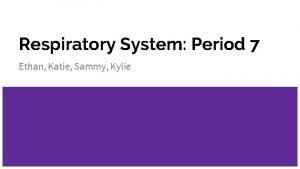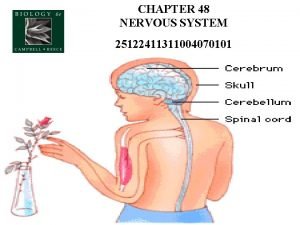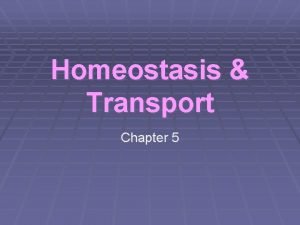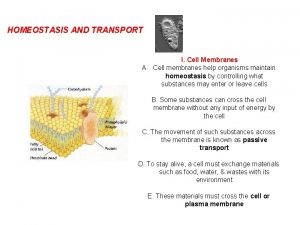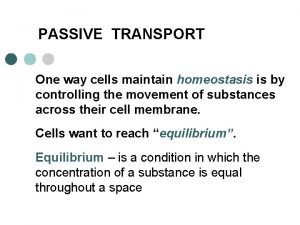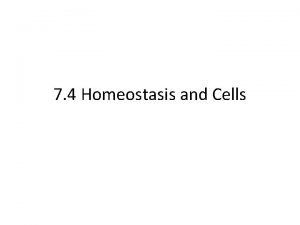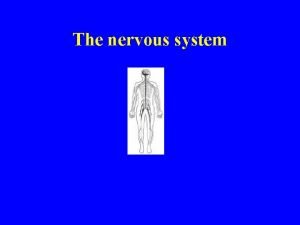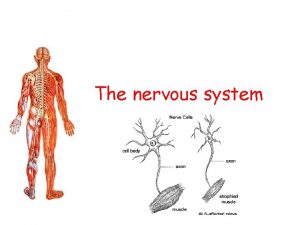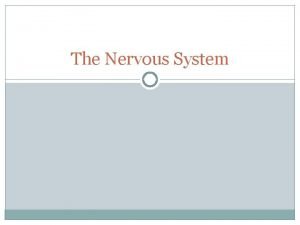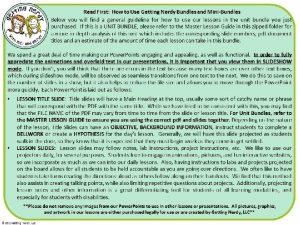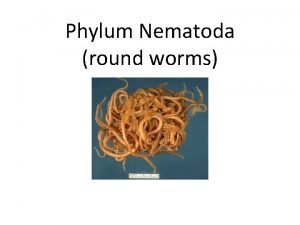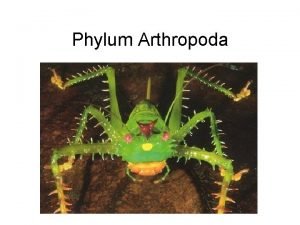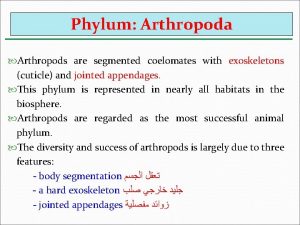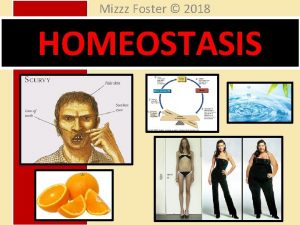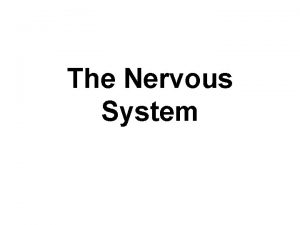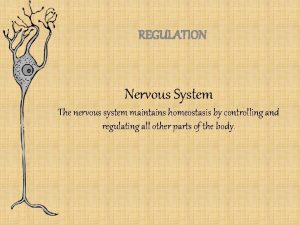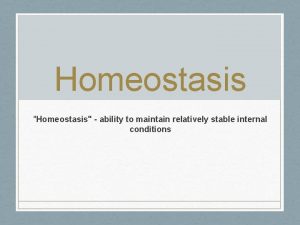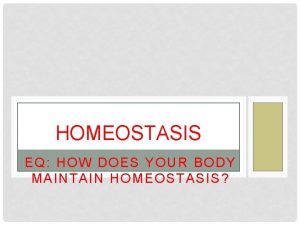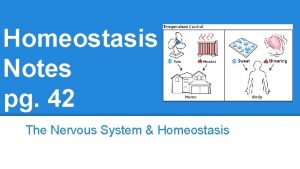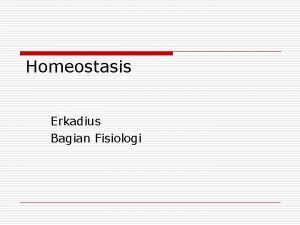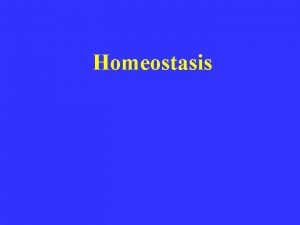The Nervous System In order to maintain homeostasis





































- Slides: 37

The Nervous System

• In order to maintain homeostasis, organisms must be able to respond to internal and external stimuli. • In order to be able to respond to stimuli, the human body needs the nervous system to bring messages from one place to another. • Nerve cells (neurons) are the basic fundamental unit of the nervous system.

Nerve Cells: A cell for rapid communication

• Nerve Cells - specialized cells that can receive, conduct, and send impulses.

Neurons The following slide has some illustrations of different kinds of neurons


Parts of the Neuron


The Dendrite 1. Dendrites- receive stimuli from sense organs or from other neurons in the form of a neurotransmitter.

• Stimuli – are changes in the external and internal environments that the organisms responds to.

Axon 3. Axon- conducts the impulse from the cell body to the terminal branches.

Cell Body 2. Cell body- has the nucleus - conducts impulse from dendrite to axon.

Myelin Sheath 4. Myelin Sheath- a lipid cellular arrangement of cells around the axon. It helps protect and speed up impulses.

Terminal Branches 5. Terminal Branchesa fork in the axon.

Synaptic Knobs 6. Synaptic Knobs. Releases chemicals called Neurotransmitters. They allow the message to be received by the next neuron, or a muscle, gland, organ etc…

Impulses

What are impulses?

• The cell membrane of a neuron conducts electrical signals from on end to another.

• The inside of a neuron has an overall negative charge, and the outside has an overall positive charge.

• The outside of a neuron has sodium ions (Na+). The inside has negatively charged proteins.

• Neither of these chemicals can pass through the cell membrane. They are attracted to each other because of their opposite charge. • A neural impulse is electrical and chemical in nature.

• There are many protein channels along the membrane where sodium (Na+) can enter, but only when the gate is open.

• The flow of charge (negatives or positives) is electricity. This is why the impulse of a neuron is said to have a electrical and chemical nature.

Steps in making an impulse

Steps in making an impulse A stimulus occurs. Either an external (sound, light, etc. . ) source or an internal source (such as a neurotransmitter).

The stimuli causes the gates to open. Which allows the sodium to enter the cell.

The sodium rushes into the cell which causes a stimulus in the next cell. This happens until the stimulus reaches the Terminal Branches.

The Reflex Arc A special pathway

The Advantage of a Reflex • The advantage of a reflex is that we can respond quickly to a stimulus. • A reflex pathway does not involve the brain which is an advantage because the reflex is quicker.

Pathway of a Reflex Stimulus Sensory Organ Sensory Neuron Interneuron Effector (Muscle or Gland) Motor Neuron

Diseases of the Nervous System

Cerebral Palsy • Results from brain damage, usually at birth. It is a term used to describe a group of diseases that affect the ability to control movement.

Multiple Sclerosis (MS) • Results from damage to the Myelin Sheath. • Symptoms vary but may include: shaking, blurred vision, slurred speech, and weakness.

Parkinson’s Disease • Involves a particular group of brain cells in the brain. • Symptoms: Tremors, poor balance, stiffening of the muscles. * The thinking functions is usually OK.

Alzheimer's Disease • Degenerative disease of the brain. The person usually loses the ability to remember, think correctly and speak. • The condition usually gets worse over time once it starts. It may take years to notice.

Credits

Power point presentation assembled by the Venerable J. R. Graphics provided by google. com/images Notes provided by Mr. Hutchinson This item may be copied, edited, and distributed as long it is free of charge. All rights reserved JRUB Productions
 Respiratory system maintain homeostasis
Respiratory system maintain homeostasis Nervous system homeostasis
Nervous system homeostasis Section 5-2 active transport
Section 5-2 active transport How do cells maintain homeostasis
How do cells maintain homeostasis Helps maintain homeostasis active or passive
Helps maintain homeostasis active or passive One way cells maintain homeostasis is by controlling
One way cells maintain homeostasis is by controlling What do unicellular organisms do to maintain homeostasis
What do unicellular organisms do to maintain homeostasis Bioflix activity homeostasis low blood glucose
Bioflix activity homeostasis low blood glucose Bioflix activity homeostasis hormones and homeostasis
Bioflix activity homeostasis hormones and homeostasis Which neuron is rare
Which neuron is rare Sensory input and motor output
Sensory input and motor output Neuronal pools are collections of
Neuronal pools are collections of Order of events in the nervous system
Order of events in the nervous system What is the airspeed velocity of an unladen african swallow
What is the airspeed velocity of an unladen african swallow Via optica
Via optica Nervous system and digestive system
Nervous system and digestive system Endocrine system and nervous system
Endocrine system and nervous system Endo crine gland
Endo crine gland Endocrine system and nervous system
Endocrine system and nervous system Chemical messengers of the nervous system
Chemical messengers of the nervous system Nematódeos
Nematódeos The nervous system is made up of
The nervous system is made up of What are the three basic functions of the nervous system
What are the three basic functions of the nervous system Learning objectives of nervous system
Learning objectives of nervous system Chapter 7 the nervous system
Chapter 7 the nervous system What is stimuli in nervous system
What is stimuli in nervous system Objectives of nervous system
Objectives of nervous system Visceral autonomic nervous system
Visceral autonomic nervous system Nervous system def
Nervous system def Plexuses
Plexuses Sns pg
Sns pg Brain scienstructable
Brain scienstructable Somatic motor neuron
Somatic motor neuron Phylum
Phylum Arthropoda insecta
Arthropoda insecta Chelicerates antennae
Chelicerates antennae Segmented coelomates
Segmented coelomates Major divisions
Major divisions
